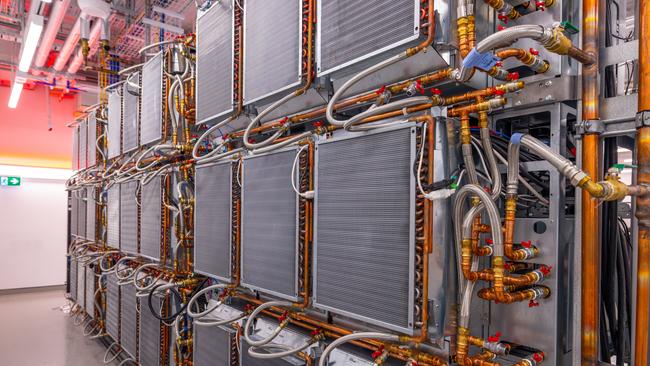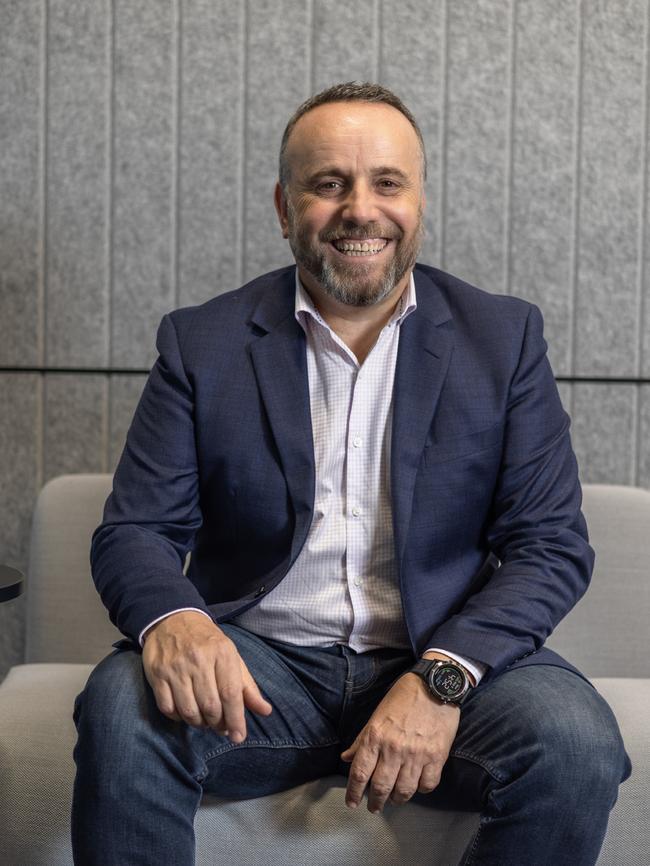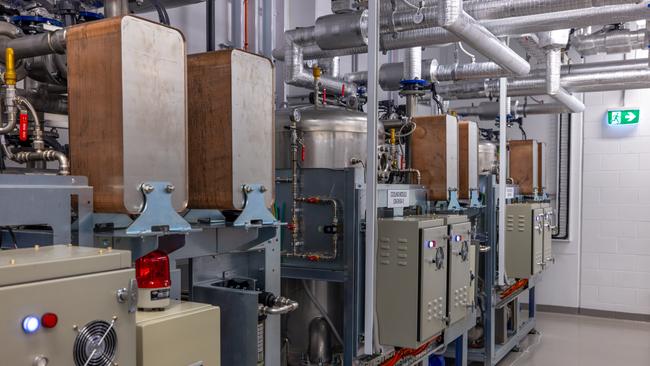OVHcloud solves AI’s dirty secret ahead of Sydney data centre launch
A new data centre in Sydney is set to lead the field in solving AI’s biggest issues – water and energy – with just a single cup of water needed to cool the rows of servers for 10 hours.

French cloud computing company OVHcloud says it has solved two of the biggest problems facing artificial intelligence and the data centres that power the technology: water and energy use.
The widespread adoption of artificial intelligence has fuelled demand for data centres that house the same computing firepower needed to mine bitcoin – a sector that has been heavily criticised for its energy use and belching out carbon emissions. But AI is yet to attract the same level of environmental scrutiny as the digital currency given.
But it’s coming and OVHcloud is getting ready. The company is launching its new data centre in Sydney next month that it says uses a single cup of water to cool servers over a 10-hour period.
This compares with the average one kilowatt data centre using about 25 million litres of water a year – the equivalent of 10 Olympic-sized swimming pools.

Vice president and general manager for Asia Pacific, Terry Maiolo, said the company achieves this feat because it focuses on cooling the data chips themselves rather than the space around the servers.
“Sometimes you just go to the source of the problem: what’s creating the heat that gets expanded into a data centre? And what generally creates the heat is the chip, the processing units etc,” Mr Maiolo said.
“Many patents were designed and there’s this heatsink that gets placed against the actual chip, the processor itself, and water passes through that heatsink and then goes off and gets re-cooled, that same water. It’s in a closed loop.
“So as a result, what happens is the actual unit that’s generating the heat is what gets cooled rather than the entire room. That ultimately leads to significant efficiency. It uses a lot less power, because it’s not cooling the entire space. It’s using a lot less water because that water is kept inside of a closed loop – it’s about a glass of water that cools each server.”
At the same time, the Albanese government has forecast AI will inject up to $600bn a year into the national economy by 2030, but many businesses are grappling with how to do that while maintaining their green credentials.

The International Energy Agency estimates that data centres – which AI relies on – accounts for 5 per cent of global greenhouse emissions, and that number is expected to rise to about 14 per cent by 2040.
“When you consider government targets that are attached to the dates around 2030 and 2032, and so forth, there’s some ground to be made up because that voracious appetite for compute is just burning more power,” Mr Maiolo said.
OVHcloud has also generated further efficiencies via placing its servers closer together, given it no longer needs the airflow around the computers, saving on space.
Mr Maiolo said the technology could also be used in hotter climates like Singapore and India.
“I’ve been spending some time in our new data centres in Mumbai, Singapore and now Sydney and as we’re starting to fill them out, if you go stand at the end where the servers are, it’s actually the coolest part of the data centre. Because it is because we’re cooling that chip, we’re cooling that server.
“Whereas particularly in Singapore where it’s quite a tropical climate, you go out the other end, and it’s actually a bit warmer, away from the chips that are generating the heat. It’s peculiar.
“The term used in industry is a PUE – power utilisation efficiency – and the industry is 1.6, and we average 1.29. And there are some governments that are putting pressure on providers to chase 1.3. So interestingly, we were already below that from a power utilisation efficiency.”
Different data centre operators are attempting to solve the problem in various ways. Amazon’s cloud computing subsidiary AWS does not disclose how much water its data centres use but says it will “return” more water to communities than it consumes by 2030.
It says it will do this in two ways: partnering with non-profit organisations to increase access to water and making its own cooling systems more efficient, as it expands its data centre “regions” in Sydney and Melbourne.
In Australia, this will involve returning about 32 million litres of water each year to the catchment area that supplies Sydney via a partnership with conservation group Greater Eastern Ranges.






To join the conversation, please log in. Don't have an account? Register
Join the conversation, you are commenting as Logout